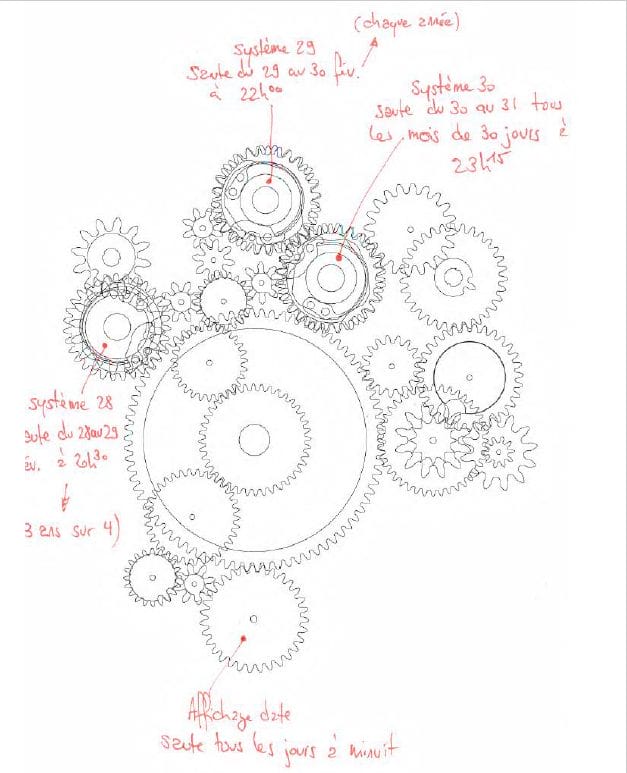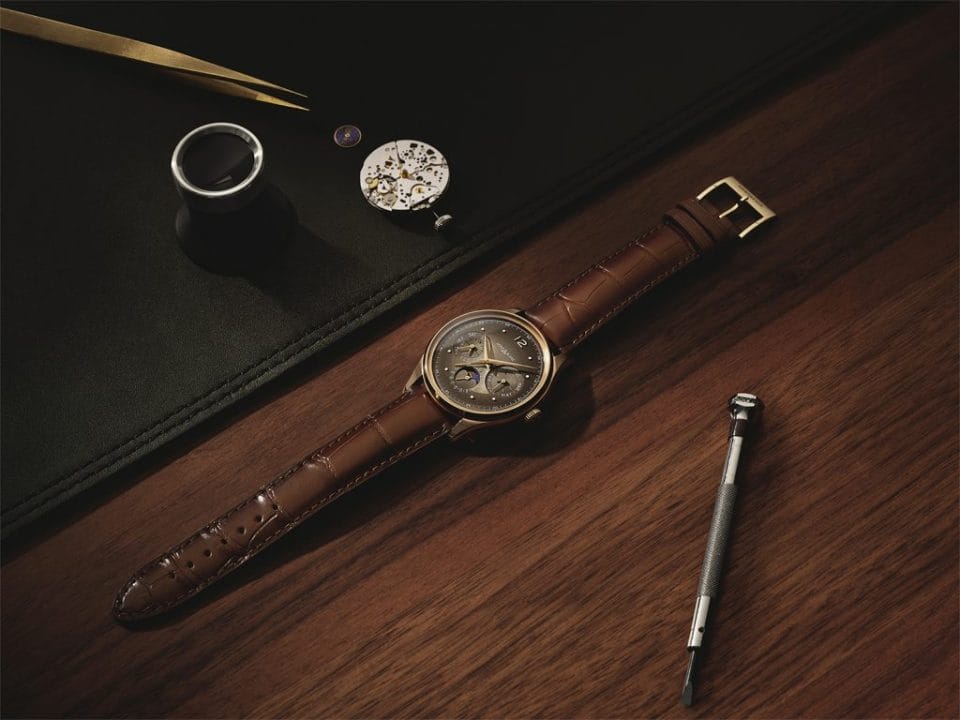
Before you wonder what a perpetual calendar is, you would have chanced upon the term at least once in your lifetime. It could be on your 14th birthday flipping through a Casio Baby-G instructions manual or browsing through an issue of World of Watches.
So, what is a perpetual calendar? It is a grand complication based on the Gregorian calendar that displays the date, day, month, year and in certain instances the week of the year and moonphase, and progresses without a need for manual adjustments. In other words, it acts similar to your iPhone calendar, the only difference is, these are mechanical inventions dating back to 1889.

Explanation drawings of the perpetual calendar complication in the Montblanc Heritage Manufacture
Now that is out of the way, we can focus a little more on how a mechanical perpetual calendar works. Housed within the mechanical marvels are a series of gears, cams and levers working in tandem to account for the various changes to a calendar. In a nutshell, specially shaped cams and levers are designed to allow the watch to “recognise” months with 28, 30 or 31 days and take leap years into account for 29 days to make the appropriate changes. Of course, there are more complex elements to it but that is the gist of it.
The only caveat to the perpetual calendar is that it has to be kept running for it to function in perpetuity which explains its namesake. Correction, perpetual calendars run till 2100 before requiring an adjustment because 2100 will be skipped since the rule for leap years is as follows — a year that is divisible by 100 and not by 400, will result in a skipped leap year.
Pictured above: Heritage Richness

Here is Montblanc’s Heritage Manufacture Perpetual Calendar Limited Edition 100 built on the brand’s rich heritage for Haute Horology. Unlike traditional perpetual calendar movement that uses levers, Montblanc’s patented MB Manufacture calibre MB 29.22 uses solely wheels and cams to operate the various calendar changes. Of the 378 components, 259 are dedicated to the perpetual calendar function. At 3 o’clock is the month and leap-year display; the date and moonphase indicator are positioned at 6 o’clock while the day and second-time zone are housed at 9 o’clock. The Montblanc’s Heritage Manufacture Perpetual Calendar Limited Edition 100 is presented in 18K rose gold with a burnt caramel dial and is limited to 100 pieces.
—
Record Setter

Bvlgari took perpetual calendars into the realm of ultraslim territory with its world-record-setting Octo Finissimo Perpetual Calendar launched during this year’s Watches & Wonders convention. Measuring a svelte 5.8mm thick, Bvlgari manages to fit 408 components into its 2.75mm thick automatic calibre BVL 305. The moonphase indicator was omitted by Bvlgari as the Octo Finissimo Perpetual Calendar features the date, day of the week, month and leap year. It is housed in the now-signature looking grey titanium case with a matching integrated bracelet, otherwise, there is a platinum edition with a blue lacquered dial.
—
Turbocharged Presence

Renown chronograph makers Breitling released its turbocharged Super Chronomat 44 collection to much fanfare just last week and all eyes were on the Super Chronomat 44 Four-Year Calendar. It displays the day, date, month, and moon phase indicators, and comes paired with a chronograph in true Breitling fashion. Unlike regular perpetual calendars, the Super Chronomat 44 Four-Year Calendar houses a semi-perpetual calendar that requires a correction once every leap year or every 1461 days. The COSC-certified movement is protected by a robust 44mm 100m water-resistant stainless steel case with ceramic bezel and is fitted on Breitling’s iconic Rouleax bracelet.
Check out our May ’21 issue of Men’s Folio Singapore after you are done!







